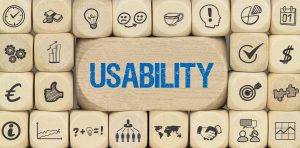2.1 Plain Language Guidelines
Plain Language Reform
When someone says “plain language,” what does this mean to you?
To me, the phrase itself suggests language that is unadorned, perhaps very simple. And, in many ways, this is exactly what it is: plain language guidelines echo best practices of professional and technical writing, making it possible for users to:
- “Find what they need
- Understand what they find
- Use what they find to meet their needs” (https://plainlanguage.gov/guidelines/
In her literature review “Plain Language in the U.S. Gains Momentum: 1940-2015,” Karen Schriver outlines the following:
“Between 1940 and 1970, plain language focused mainly on readability. During the 1970s, some practitioners began to employ usability testing. By the mid-1980s, there was a widespread sense that plain-language advocates had shifted priorities from readability to usability. Between 1980 and 2000, advocates broadened their vision—beyond word- and sentence-level concerns to include discourse-level issues, information design, and accessibility. Between 2000 and 2015, advocates continued to worry over their old questions (“Can people understand and use the content?”), but also asked, “Will people believe the content? Do they trust the message?” By 2015, plain language had gained significant momentum in business, government, medicine, and education.”

Readability, usability, discourse-level issues, information design, accessibility, and credibility are the concerns of all writers.
As you gain practice examining these areas, you’ll most assuredly gain an appreciation for their importance.
Perhaps you are already wondering how important these issues are… I mean, can’t we just write what we need and move on without worrying about so many details? The answer is yes, you can. But your chances of communicating effectively and successfully are lessened when you don’t consider your audience or how you are communicating your message.
Plain language legislation has made life-changing differences for many people in legal, financial, and medical contexts. Tax laws and forms are easier to understand, legal notices are less likely to be ignored out of confusion, and health literacy is within reach of many more people.
So far, this textbook has covered several of the principles of plain language, including
- Writing for your audience
- Organizing information, and
- Designing for reading
In the next chapters, you’ll look more closely at sentence-level strategies that will help you
- Choose your words carefully
- Keep it conversational, and
- Be concise
Content about Plain Language is informed by www.plainlanguage.gov: “You may use any of the content on this site without explicit permission. As a federal website, the content is in the public domain. We ask only that you credit our work by citing back to PLAIN and www.plainlanguage.gov.”
Media Attributions
- Usability / Würfel mit Symbole © Gerhard Ledwinka is licensed under a All Rights Reserved license
